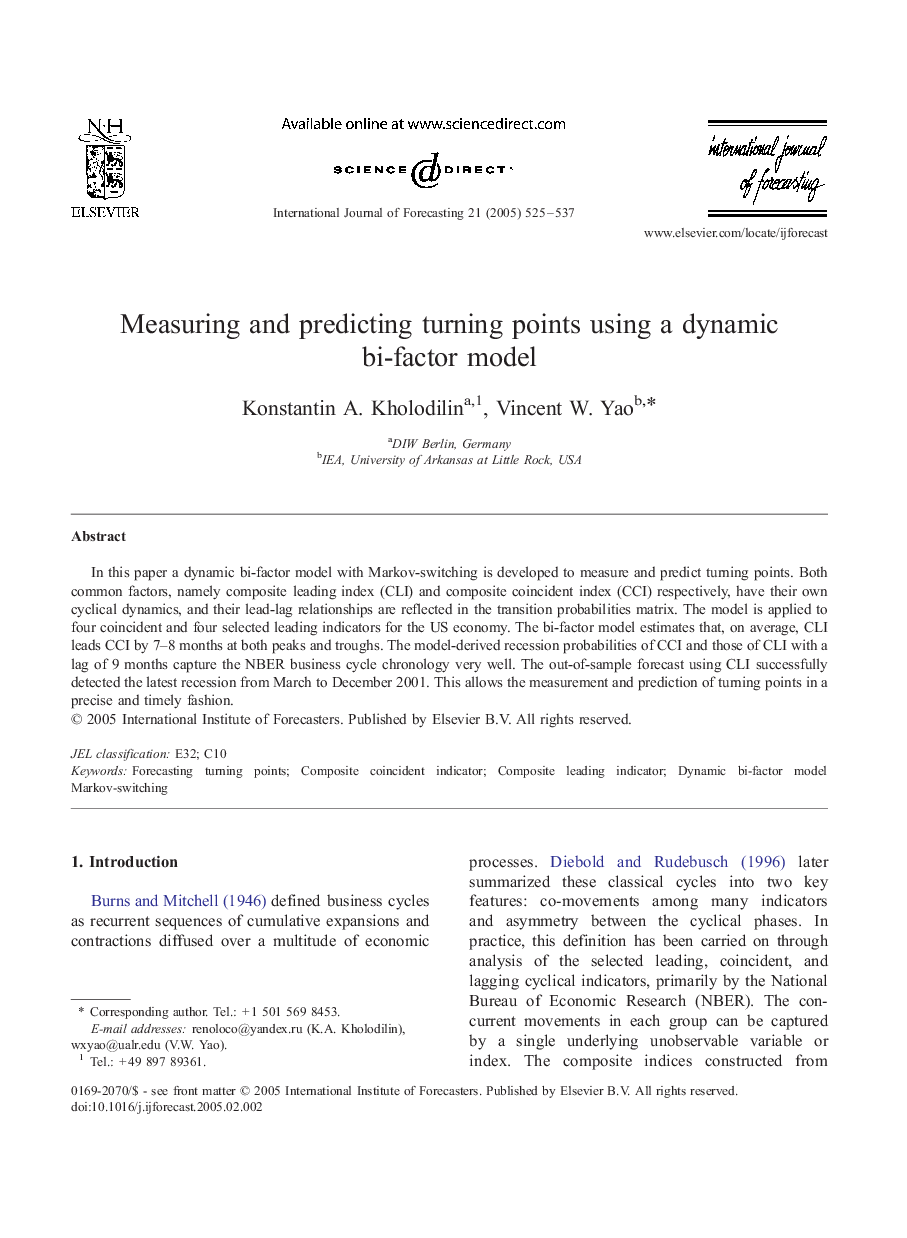| Article ID | Journal | Published Year | Pages | File Type |
|---|---|---|---|---|
| 9732536 | International Journal of Forecasting | 2005 | 13 Pages |
Abstract
In this paper a dynamic bi-factor model with Markov-switching is developed to measure and predict turning points. Both common factors, namely composite leading index (CLI) and composite coincident index (CCI) respectively, have their own cyclical dynamics, and their lead-lag relationships are reflected in the transition probabilities matrix. The model is applied to four coincident and four selected leading indicators for the US economy. The bi-factor model estimates that, on average, CLI leads CCI by 7-8 months at both peaks and troughs. The model-derived recession probabilities of CCI and those of CLI with a lag of 9 months capture the NBER business cycle chronology very well. The out-of-sample forecast using CLI successfully detected the latest recession from March to December 2001. This allows the measurement and prediction of turning points in a precise and timely fashion.
Keywords
Related Topics
Social Sciences and Humanities
Business, Management and Accounting
Business and International Management
Authors
Konstantin A. Kholodilin, Vincent W. Yao,
